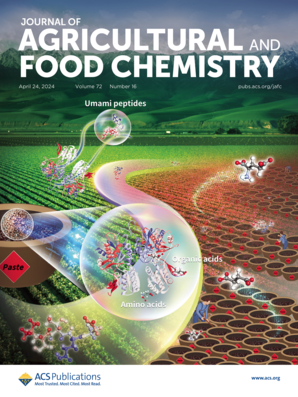Integration of Fatty Acid-Targeted Metabolome and Transcriptomics Reveals the Mechanism of Chronic Environmental Microcystin-LR-Induced Hepatic Steatosis
IF 5.7
1区 农林科学
Q1 AGRICULTURE, MULTIDISCIPLINARY
引用次数: 0
Abstract
Microcystin-LR (MC-LR) is a toxin that causes hepatic steatosis. Our previous study found that exposure to 60 μg/L MC-LR for 9 months resulted in liver lipid accumulation, but the underlying mechanisms remain elusive. Herein, for the first time, fatty acid-targeted metabolome and RNA-seq were combined to probe the effect and mechanism of chronic (12-month) MC-LR treatment on mice lipid metabolism at environmental-related levels (1, 60, and 120 μg/L). It was found that MC-LR dose-dependently raised serum and liver lipid levels. The total cholesterol (TC) levels in the liver were significantly increased following treatment with 1 μg/L MC-LR (equivalent to 0.004 μ/L in human). Treatment with 60 and 120 μg/L MC-LR significantly elevated TC and triglyceride (TG) levels in both serum and liver. Serum fatty acid-targeted metabolome analysis demonstrated that exposure to 1, 60, and 120 μg/L MC-LR caused significant alterations in the fatty acid profile. Chronic 1, 60, and 120 μg/L MC-LR treatment significantly increased serum polyunsaturated fatty acids (PUFAs), including conjugated linoleic acid and eicosapentaenoic acid, which positively correlated with serum or liver TG levels. Chronic exposure to 120 μg/L MC-LR led to a significant decrease in the accumulation of saturated fatty acids, including citramalic acid, pentadecanoic acid, and docosanoic acid, which were negatively correlated with serum or liver lipid levels. These findings suggested that 1 μg/L MC-LR exposure caused mild lipid metabolism disruption, while 60 and 120 μg/L MC-LR treatment resulted in pronounced hepatic steatosis in mice. Transcriptome analysis revealed that chronic environmental MC-LR treatment regulated the expression of genes involved in the phosphatidylinositol 3-kinase (PI3K) complex and fatty acid metabolism. Western blotting and RT-qPCR confirmed that chronic environmental MC-LR exposure activated the PI3K/AKT/mTOR signaling pathway, the downstream of fads3 gene that participates in fatty acid desaturation was upregulated, fatty acid degradation-related genes, including acsl1, acsl4, and ehhadh were inhibited, and lipid transport-related genes, including slc27a4 and apol7a, were promoted. Thus, chronic environmental MC-LR exposure boosts hepatic steatosis. Our work indicated that the limit concentration of 1 μg/L MC-LR in human drinking water for safety needs to be discussed. The study provides the first evidence of the fatty acid profile and gene changes and gains new insights into the mechanisms of chronic environmental MC-LR treatment-induced hepatic steatosis.

求助全文
约1分钟内获得全文
求助全文
来源期刊
CiteScore
9.90
自引率
8.20%
发文量
1375
审稿时长
2.3 months
期刊介绍:
The Journal of Agricultural and Food Chemistry publishes high-quality, cutting edge original research representing complete studies and research advances dealing with the chemistry and biochemistry of agriculture and food. The Journal also encourages papers with chemistry and/or biochemistry as a major component combined with biological/sensory/nutritional/toxicological evaluation related to agriculture and/or food.

 求助内容:
求助内容: 应助结果提醒方式:
应助结果提醒方式:


